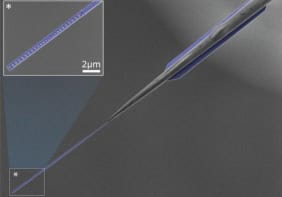Five physics projects have been awarded money in the fourth round of the UK's £750m Joint Infrastructure Fund (JIF). These are: a fluid-dynamics laboratory at Cambridge University; a laboratory to develop detectors and optics at very high frequencies, also at Cambridge; a project to develop instruments for observational cosmology at Cardiff University; a new centre for fundamental physics at Durham University; and a centre for 'science at extreme conditions' at Edinburgh University. There were also two successful bids from University College London in areas related to physics - one covering research into photonics and telecommunications and another for the development of a new laboratory for minerals, rock and ice physics.
The JIF scheme was set up in 1998 by the UK government and the Wellcome Trust – the world’s largest biomedical research charity – to provide much-needed funding for university laboratory facilities. The £125m divided out among 28 research projects in this latest round brings the total money awarded so far under the scheme to £729m.
Cambridge’s fluid dynamics laboratory will be used to model phenomena such as turbulence and volcanic eruptions. It will be part of a new site on the outskirts of the city that will house the university’s maths and theoretical physics departments. Cambridge University’s other successful project in this round will develop instruments for the astronomy facilities, such as the Attacama Large Millimetre Array. It will also design and build high-frequency detectors for applications in medical imaging, biochemistry and remote sensing.
Richard Nelmes of Edinburgh University, says he is ‘very excited’ at being awarded JIF money to establish a centre for research into science at extreme conditions, having bid for £7m. “The money will help to secure the future of extreme conditions research in the UK”, he adds. The successful bid will allow a new wing to be built onto Edinburgh’s physics department. The new centre will provide a focus for a multi-disciplinary effort in science at extremes of pressure, temperature, and electromagnetic and mechanical excitation, for research that encompasses chemistry, biology, earth and planetary science, and engineering as well as physics.
The laboratory at Cardiff will create instruments for studying the cosmic microwave background. The Durham Centre for Fundamental Physics will combine the Institute of Particle Physics Phenomenology and the Institute for Advanced Astronomical Computing. The new centre will bridge the gap between theoretical and experimental particle physics and it is hoped that combining the two organizations under one roof will stimulate interdisciplinary research and provide a computing base for the UK physics community.
The rest of the JIF money will be allocated next year. Infrastructure funds will then come from the recently announced Science Research Investment Fund, which will involve the government investing £325m in 2002/3 and £450m the following year and the Wellcome Trust providing £225m for biomedical research. This fund will not involve open competition between rival bids. Money will instead be allocated depending on the quality and quantity of research at the host institution.



